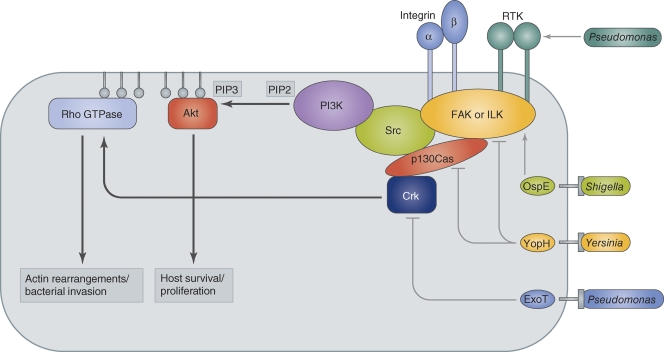Figure 2.
Host signaling pathways exploited for bacterial invasion and colonization. Ligand-activated transmembrane receptors (integrins or receptor tyrosine kinases) recruit the cytoplasmic signaling proteins FAK or ILK. This in turn leads to binding of p130Cas and Crk, as well as Src and PI3K. PI3K converts PIP2 to PIP3, which binds the pleckstrin homology (PH) domain of Akt. Akt mediates host survival and proliferation signaling. PIP3 also recruits Rho GTPases to the membrane, where they activate actin rearrangements that lead to cellular motility or bacterial uptake through formation of membrane protrusions. Rho GTPases are also activated by Crk. P. aeruginosa activates PI3K signaling by integrin or RTK binding to promote cellular uptake. The S. flexneri T3SS-injected effector OspE activates PI3K signaling by recruiting ILK. Yersinia spp. and P. aeruginosa inject T3SS effectors YopH and ExoT to inhibit GTPase activation and phagocytosis (Yersinia spp.) or stop invasion at a later stage of infection (P. aeruginosa). Direct manipulation of small GTPases is a major target for a variety of bacterial effectors (Aktories et al., 2000; Alto, 2008).

